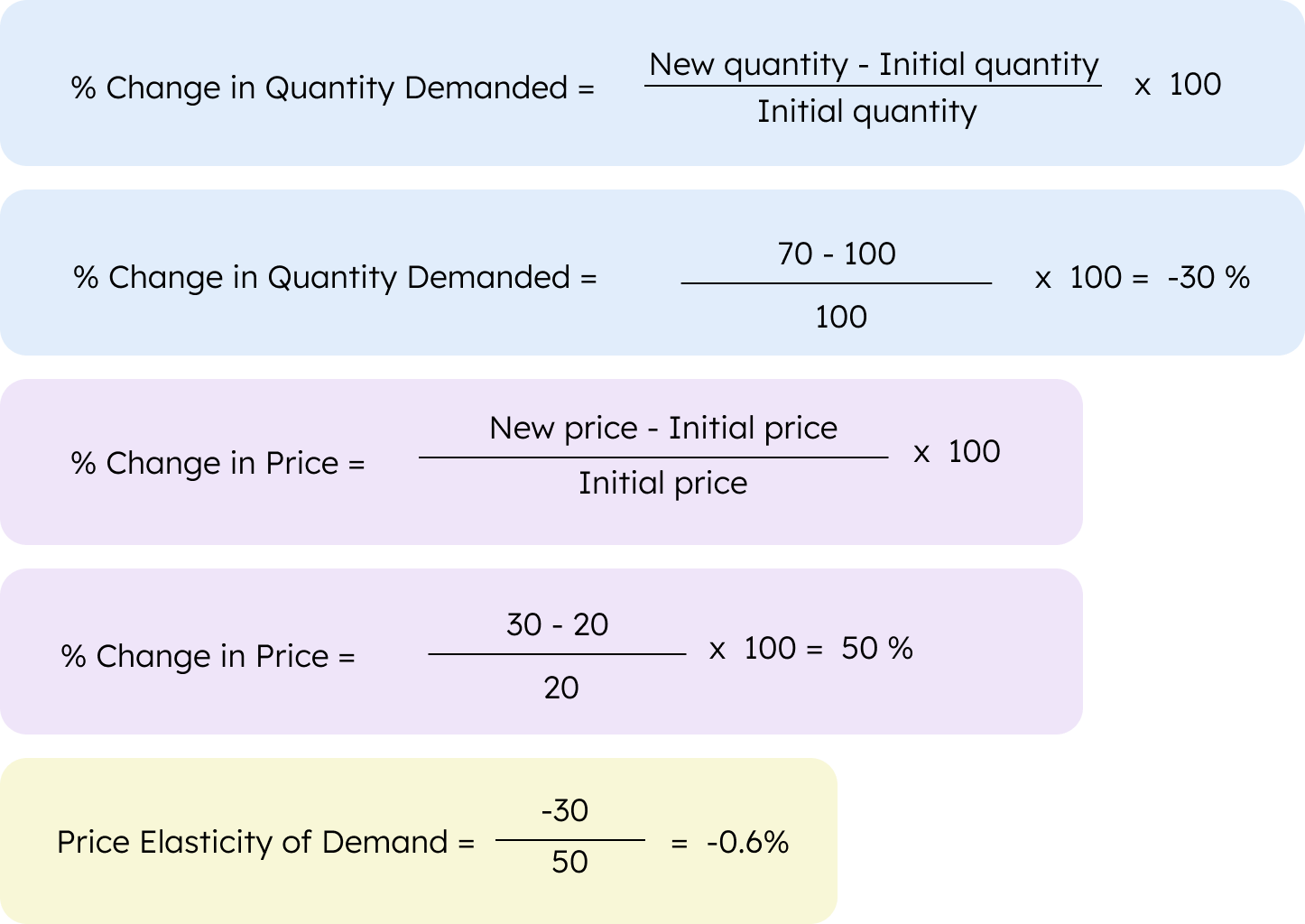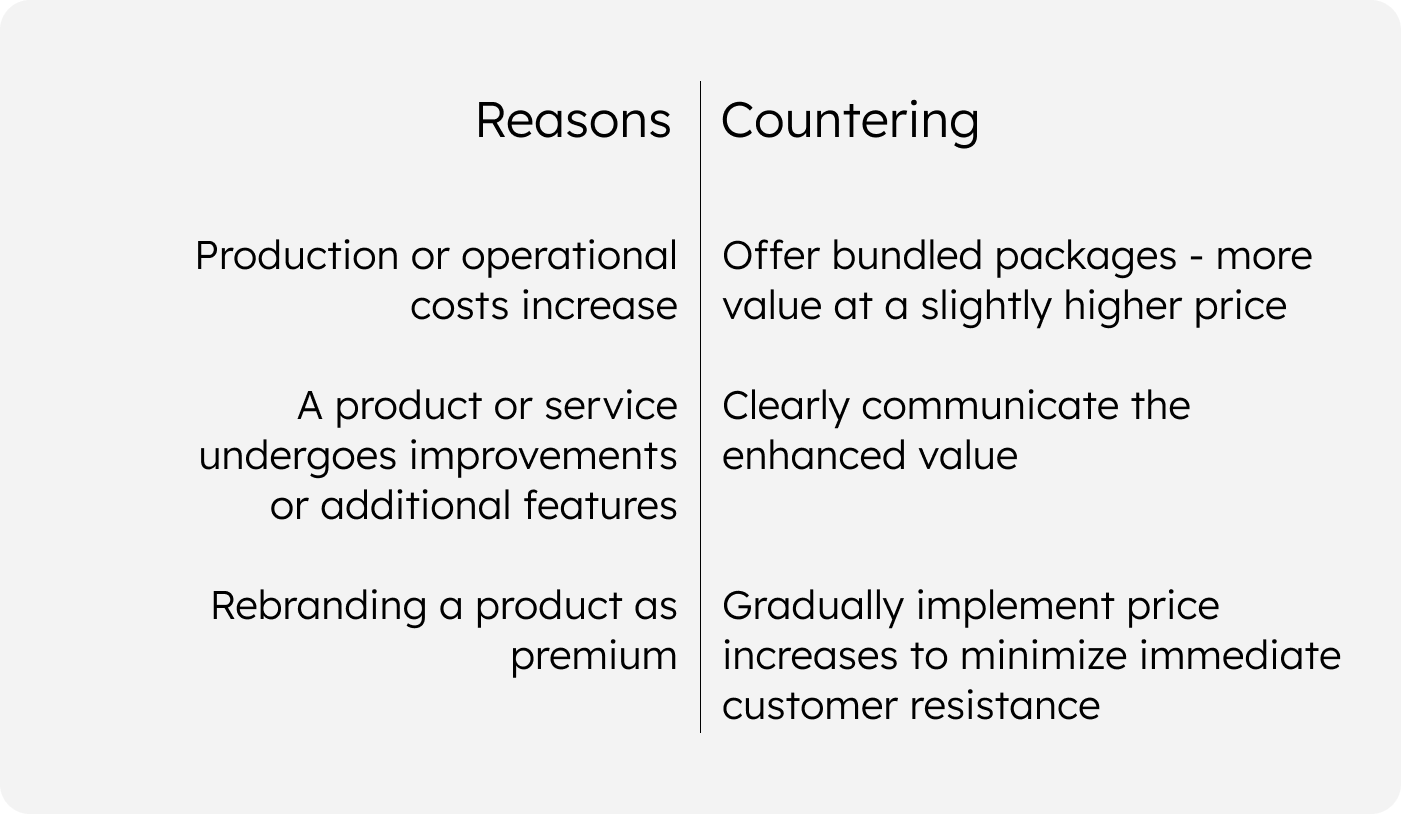26 Feb 202410 minutes read
Understanding price elasticity for marketing purposes
Lara Schmidt
Content Creator

Understanding price elasticity for marketing purposes
Have you ever wondered why prices for some products go up? The answer lies in a key concept in the world of marketing called price elasticity, which plays a big role in how businesses decide on prices, plan marketing efforts, and adapt to changes in the market. In this article, we'll explore the concept of price elasticity, helping you understand how it affects the way companies deal with prices and marketing plans in the competitive market.
What is Price Elasticity?
Price elasticity measures the sensitivity of demand for a product or service to changes in its price. To make it simple, think of it as a kind of 'sensitivity meter': for some products, when the price changes, people quickly adjust how much they buy. This is called 'elastic' demand. On the other hand, for things that are necessary, like medicine or electricity, people might not change their buying habits, even if the price goes up a bit – this is 'inelastic' demand. Understanding this concept is crucial for businesses as it helps them predict consumer behavior and adjust pricing accordingly.
Determining Price Elasticity
The formula for price elasticity of demand is: 
Example: You are an english tutor and you decide to raise the price of your lessons from $20 to $30. Initially, you had 100 students per week, but after the price increase, you now have 70 students per week.
Price elasticity (PED) can be categorized into three main types: elastic, inelastic, and unitary.
- Elastic Demand. (PED > 1), the demand is considered elastic. This means consumers are highly responsive to price changes. Examples include luxury goods, brandy items and services.
- Inelastic Demand. (PED < 1), the demand is inelastic. Essential goods like medications or certain utilities often fall into this category, as consumers are less responsive to price changes.
- Unitary Elasticity. (PED = 1), it is termed unitary elasticity. This implies that the total spending remains constant despite changes in price.
The PED in our example with an english tutor is -0.6. Since this is less than 1, it suggests inelastic demand. People still use your services, even though the price went up, but not as much. This means your lessons are more of a must-have for customers, and they're not very sensitive to the price change.
Several factors influence price elasticity, such as the availability of substitutes, necessity of the product, brand loyalty, and consumer income levels. Understanding whether your product or service falls into a category of elastic demand can guide decisions on price increases and help in formulating effective strategies to counter any negative impact on demand.
Price Increases: reasons and countering

Increasing Conversions in a Competitive Scenario
To enhance customer relations and retention in industries where pricing is typically established through competitive benchmarking or regulatory guidelines (healthcare, education, transportation), businesses should prioritize conversions by providing additional services. Relying exclusively on pricing may not be the most effective strategy; therefore, improving sales can be achieved by concentrating on various aspects.
- Differentiation
Explanation: Stand out from the competition by highlighting unique features, benefits, or qualities that distinguish your product or service.
Example: If you're an online tutor, emphasize exclusive knowledge, flexible schedule, or advanced technology that sets your service apart from others in the market. - Targeted Marketing
Explanation: Instead of casting a broad net, identify and focus on specific customer segments that are more likely to be interested in your offering.
Example: If you are a fitness instructor, create targeted campaigns for fitness enthusiasts, emphasizing the benefits of your services in helping them achieve their goals. - Optimized Pricing
Explanation: Pricing plays a significant role in consumer decision-making. Employ dynamic pricing strategies based on market trends, competitor pricing, and consumer behavior.
Example: Regularly analyze competitors and adjust your own pricing to remain attractive to customers while ensuring profitability. - Customer Engagement
Explanation: Actively engage with your audience through various channels, including social media, email marketing, and customer service. Build a strong online presence, respond promptly to customer inquiries, and foster a sense of community around your brand.
Example: Use social media platforms to share engaging content, create polls, and respond to customer comments and messages. Establish a positive and responsive online presence to enhance brand loyalty. - Incentives and Promotions
Explanation: Offer special promotions, discounts, or exclusive deals to incentivize customers to choose your product over competitors. Limited-time offers and loyalty programs can create a sense of urgency and reward customer loyalty.
Example: Introduce a "buy one, get one free" promotion, a limited-time discount, or a loyalty program that provides rewards for repeat purchases.
Conclusion
Price elasticity is a fundamental concept that shapes marketing strategies and influences how businesses navigate pricing changes in the dynamic market landscape. By understanding the elasticity of your products and services, you can make informed decisions, implement effective pricing strategies, and enhance your competitiveness in a crowded marketplace.
Calendsa is FREE to use - sign up here